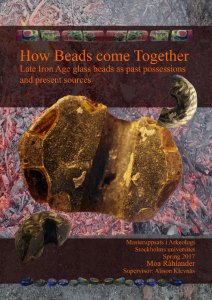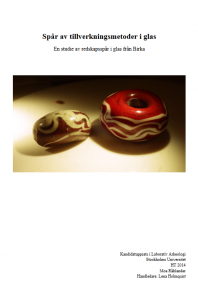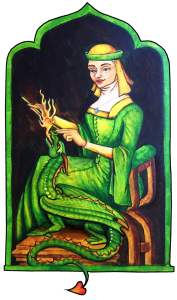At the bottom of this page you can find Pdfs of my work. I would also like to recommend Text and Trowel, that have a lot of good articles about beads!
If you are looking for more clear, basic questions, those can be found here.
 How Beads come Together (with the catalouge)
How Beads come Together (with the catalouge)
This study aims to demonstrate the potential for understanding first millennium glass beads not as individual representatives of types, but as collections of objects brought together and curated by owners. It uses the author’s experience as a skilled beadmaker to investigate processes of bead production and mechanics of bead collection current in Scandinavia and Anglo-Saxon England in the period of 6th to 9th century AD. In the study the bead collections of seven graves are examined from the perspective of their production techniques, materials, and damage from wear and cremation. The results point to beads being acquired in different numbers and often worn for long periods of time before being buried.
Spår av tillverk ningsmetoder i glas – En studie av redskapsspår i glas från Birka
ningsmetoder i glas – En studie av redskapsspår i glas från Birka
This is an experimental study of a few glass objects from the Birka Excavations 1987-1989. A number of beads and waste from bead production have been studied. A group of these objects have also been examined with a scanning electron microscope (SEM) equipped with energy-dispersive detectors (EDS) to comparatively analyze the materials composition. Experiments to recreate the technique in which they were made have been attempted with various results. The techniques found in the beads include the use of murrini, stringer, dotting, and blown-drawn. However the waste material available to this study only suggests that in Birka, beads where made with the winding technique and ornamented with stringer and possibly dotting. The glass used was heated in clay crucibles and some rods where premade.

